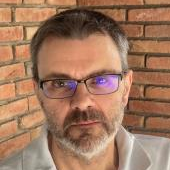The New Paradigm of Waste Management: Waste as Resources
A special issue of Sustainability (ISSN 2071-1050). This special issue belongs to the section "Environmental Sustainability and Applications".
Deadline for manuscript submissions: closed (30 August 2018) | Viewed by 70879
Special Issue Editor
Interests: biological treatment of organic waste (composting and anaerobic digestion); solid-state fermentation to convert wastes into bioproducts and nanotechnology for environmental remediation
Special Issues, Collections and Topics in MDPI journals
Special Issue Information
Dear Colleagues,
This Special Issue focuses on all the efforts in research being made to change the classical paradigm of waste management, aimed to get rid of them or recovering a minimal profit. All the works where wastes are raw sources to obtain new or existing products by means of physical, chemical or biological processes are welcome. Works only focused on composting or anaerobic digestion are discouraged, unless these technologies have a minor or secondary role. The Special Issue is aimed at covering all type of wastes, from urban and industrial sources.
Prof. Antoni Sánchez
Guest Editor
Manuscript Submission Information
Manuscripts should be submitted online at www.mdpi.com by registering and logging in to this website. Once you are registered, click here to go to the submission form. Manuscripts can be submitted until the deadline. All submissions that pass pre-check are peer-reviewed. Accepted papers will be published continuously in the journal (as soon as accepted) and will be listed together on the special issue website. Research articles, review articles as well as short communications are invited. For planned papers, a title and short abstract (about 100 words) can be sent to the Editorial Office for announcement on this website.
Submitted manuscripts should not have been published previously, nor be under consideration for publication elsewhere (except conference proceedings papers). All manuscripts are thoroughly refereed through a single-blind peer-review process. A guide for authors and other relevant information for submission of manuscripts is available on the Instructions for Authors page. Sustainability is an international peer-reviewed open access semimonthly journal published by MDPI.
Please visit the Instructions for Authors page before submitting a manuscript. The Article Processing Charge (APC) for publication in this open access journal is 2400 CHF (Swiss Francs). Submitted papers should be well formatted and use good English. Authors may use MDPI's English editing service prior to publication or during author revisions.
Keywords
- Wastes as sources
- Cleaner production
- Biorefineries
- Solid-state fermentation
- Bioproducts
- Organic wastes





